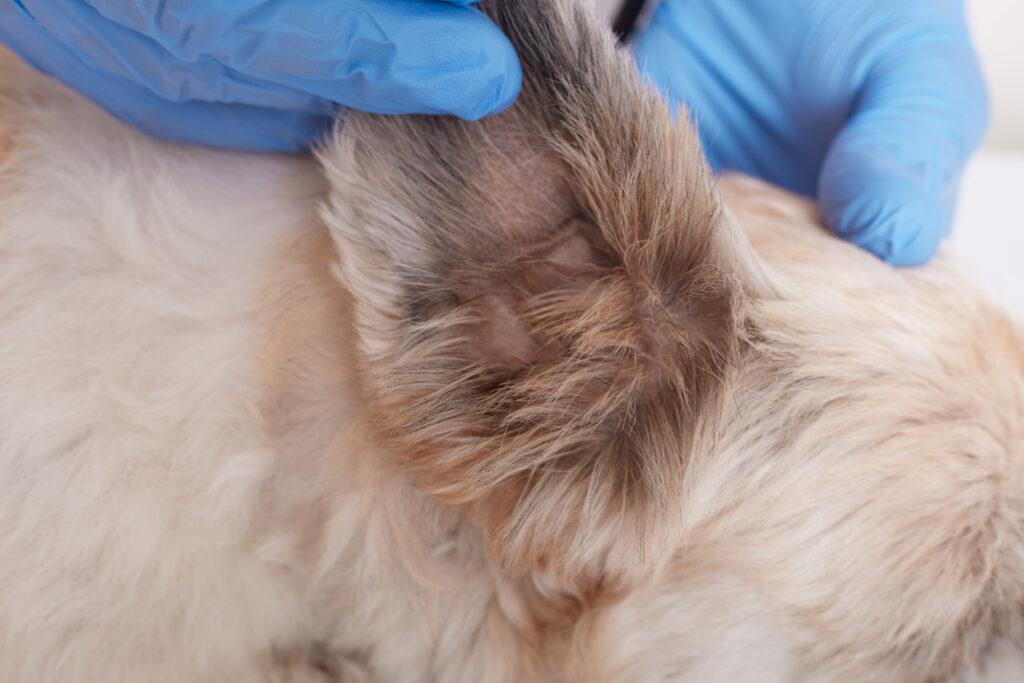Ticks are one of the most common external parasites that affect both dogs and cats, especially in hot and humid climates like Nigeria. These tiny creatures can transmit serious diseases to pets, including Lyme disease, babesiosis, and anaplasmosis, making tick prevention crucial for your pet’s health. In this article, we will discuss the most effective tick prevention methods for dogs and cats in Nigeria, helping you protect your pets from these dangerous pests.
10 Tick Prevention Methods for Dogs and Cats in Nigeria
1. Use of Tick Preventative Medications
One of the most effective ways to prevent ticks is by using veterinary-approved tick prevention medications. These medications come in various forms, including oral tablets, topical treatments, and tick collars. They work by killing or repelling ticks before they have a chance to bite and attach to your pet.
Types of Tick Preventative Medications
- Topical Treatments: These are applied directly to your pet’s skin and are effective for several weeks.
- Oral Medications: These are chewable tablets that are taken orally, offering long-lasting protection.
- Tick Collars: These collars are worn around the pet’s neck and are effective in repelling and killing ticks.
Consult your vet to choose the most suitable tick preventative medication for your dog or cat based on their breed, age, and health status.
2. Regular Grooming and Brushing
Grooming your pet regularly is not only important for their hygiene, but it also helps you spot any ticks that may have attached to their fur. Ticks are often found in areas with less fur, like the ears, neck, and paws. Brushing your pet daily helps remove ticks and prevents infestations from occurring.
Brushing Tips for Your Pets
- Use a fine-toothed comb to carefully check your pet’s fur after walks, especially in areas with dense vegetation.
- Pay attention to areas where ticks like to hide, such as the underbelly, armpits, and between the toes.
- If you find a tick, remove it immediately with proper tools (preferably tweezers or a tick removal tool).
3. Environmental Control
Ticks thrive in grassy, wooded, or overgrown areas. By maintaining a tick-free environment in and around your home, you can significantly reduce the risk of ticks infesting your pets.
Environmental Control Tips
- Keep your lawn trimmed short and remove tall grass and bushes around your home.
- Create a tick-free zone by keeping your pets away from wooded areas or fields, especially during peak tick seasons (rainy and humid months).
- Use tick sprays and repellents around your home and yard to kill ticks and prevent infestations.
4. Tick Repellent Sprays
In addition to medications, tick repellent sprays are an excellent preventive measure for dogs and cats. These sprays can be applied to your pet’s coat before going outdoors, helping to repel ticks and other pests.
How to Use Tick Repellent Sprays
- Apply the spray evenly over your pet’s body, avoiding their eyes, mouth, and nose.
- Follow the instructions on the label for how often to reapply the spray.
- Choose pet-safe, vet-approved sprays that are suitable for the climate and your pet’s age and health.
5. Routine Veterinary Checkups
Routine veterinary visits are essential for ensuring that your pets are free from ticks and other parasites. During these visits, your vet can check for ticks and other pests, administer tick preventative treatments, and give advice on how to protect your pet year-round.
RECOMMENDED
- 10 Common Dog Skin Diseases and Conditions in Nigeria: Tips for Prevention
- Best Dog to Buy in Nigeria: Top 10 and Their Prices
- Top 10 24-Hour Veterinary Clinics in Lekki for 2025: Urgent Care for Pets
Veterinary Checkups for Tick Prevention
- Schedule regular checkups with your vet, particularly during tick season.
- Ask your vet to check for ticks during each visit and inquire about additional preventive measures.
- If you notice any symptoms of tick-borne diseases (fever, lethargy, loss of appetite), seek immediate veterinary care.
6. Avoiding High-Risk Areas
Certain areas are known to harbor high populations of ticks. By avoiding these areas, especially during the rainy season when ticks are most active, you can reduce your pet’s exposure.
High-Risk Areas
- Wooded areas and forests
- Tall grass and bushy areas
- Areas with high animal traffic (such as parks or farms)
If your pet must walk through these areas, ensure they’re treated with a tick prevention medication or spray.
7. Natural Tick Prevention Methods
Some pet owners prefer using natural or home remedies to prevent ticks. While these methods are often not as effective as veterinary-approved treatments, they can offer additional protection in combination with other measures.
Natural Prevention Methods
- Essential oils like eucalyptus, citronella, and lavender are believed to repel ticks. However, be cautious as some essential oils can be toxic to pets.
- Apple cider vinegar: Some pet owners use diluted apple cider vinegar to rinse their pets, which may help deter ticks.
Always consult your vet before using natural remedies to ensure they are safe for your pet.
8. Proper Tick Removal
If you find a tick on your dog or cat, it’s important to remove it properly to avoid infection and further complications. Removing ticks early is essential to prevent the transmission of tick-borne diseases.
How to Remove Ticks
- Use fine-tipped tweezers or a tick removal tool to grasp the tick as close to the skin as possible.
- Pull the tick out gently and steadily without twisting.
- Clean the bite area with antiseptic and dispose of the tick in alcohol.
If you’re unsure about removing a tick, seek professional help from your vet.
9. Tick Vaccination
In some cases, certain vaccines can help prevent tick-borne diseases, like Lyme disease. While these vaccines are not designed to kill ticks, they can reduce the risk of infection from diseases transmitted by ticks.
Consult Your Vet About Vaccines:
- Inquire about Lyme disease vaccinations if ticks are a significant concern in your area.
- Make sure your pet is up-to-date on all their vaccines, including those for tick-borne diseases.
10. Monitoring and Early Detection
Monitoring your pet regularly and being aware of the signs of tick-borne diseases can help catch any issues early. Common symptoms include fever, joint pain, lethargy, and loss of appetite.
Signs of Tick-Borne Diseases:
- Sudden lethargy or lack of energy
- Loss of appetite or refusal to eat
- Lameness or joint pain
- Swelling near the bite site
If you notice any of these symptoms, take your pet to the vet immediately.
Why Choose Dulham Veterinary Services for Tick Prevention?
At Dulham Veterinary Services, we are committed to providing comprehensive care for your pets. From expert tick prevention tips to professional treatments, our team ensures your dog or cat remains safe from ticks and tick-borne diseases. We offer a wide range of tick prevention products, including oral medications, topical treatments, and sprays, tailored to your pet’s needs.
Book Your Tick Prevention Appointment Today!
Contact Dulham Veterinary Services to schedule a consultation and get the best protection for your pet. Visit Dulham Veterinary Services.
Visit Us
No 23 Crown Court Estate 2, Orunbe close , Oniru. Victoria Island, Lagos.
Phone Us
Mail Us
Frequently Asked Questions About Tick Prevention for Pets in Nigeria
What are the best tick prevention methods for pets in Nigeria?
The best tick prevention methods include using veterinary-approved tick medications, regular grooming and brushing, applying tick-repellent sprays, and avoiding high-risk areas.
How often should I treat my pet for ticks?
It’s recommended to treat your pet for ticks on a regular basis, especially during peak tick season. Follow the product instructions and consult your vet for the best schedule.
Can ticks transmit diseases to my pet?
Yes, ticks can transmit serious diseases such as Lyme disease, babesiosis, and anaplasmosis, which can affect your pet’s health.
Can natural remedies be used for tick prevention?
Some natural remedies, like essential oils and apple cider vinegar, are believed to repel ticks, but they are not as effective as veterinary-approved treatments. Always consult your vet before using natural methods.
How can I remove a tick from my dog or cat?
Use fine-tipped tweezers or a tick removal tool to grasp the tick close to the skin and pull it out gently. Clean the area afterward and dispose of the tick in alcohol.

